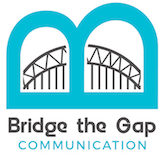You’ve taken the time to draft website articles and now you’re expecting to see some results. The hard part is, that the sheer presence of website articles doesn’t make your website traffic soar. Instead, you’ll need to look for these five characteristics that help you earn website traffic from your articles.
Tips for Getting More Traffic from Your Website Articles
Learn how to experience greater website traffic to your website articles. These five simple steps are easy for marketing teams with any skill or expertise level to complete.
1. Ensure Your Content is High Quality
Poorly written content won’t rank well for SEO. And even if it does, you won’t get good readership because users will bounce quickly. High-quality content has several characteristics.
- Focused on a customer and their needs instead of sales
- Simple language and sentence structure
- Good heading distribution to make the content easily digestible
- Use of bullets and lists to help users navigate the content
- Clear calls to action to help turn website traffic into leads
- Use of images, videos and graphics to make the content come to life
The better your content is, the longer people will stay on the page to explore, which will further indicate to search engines that your content is worth ranking and showing to future users.
Plus, high-quality content encourages links and shares. So other writers might link to your content or graphics if they are done well. Or when your content resonates well with a reader, they might share it in their newsletter or on their social media feeds.
2. Outline a Target Keyword for Every Article
You don’t want your articles to only be dictated by SEO. But you also don’t want to ignore it. So once you have a great idea for an article based on your target audience’s needs and interests, you should do some keyword research around the topic to learn how users search for answers related to their questions.
Each article you publish should have a target keyword that you’ve optimized that page for. This will help generate organic website traffic while still writing content that is relevant and important to your audience.
Sometimes you might lead with SEO research and develop content around keywords. Other times the ideas might come from customer interactions where you learn more about what your customers need from you. The most successful articles take both your audience’s needs and SEO into account.
3. Distribute Your Articles at Publishing and Every Once in a While
Some companies put too much stock in SEO. They publish content and expect that people will find it and flock to it. While that’s the dream, it rarely happens with content.
You can help people start discovering your content by distributing it. This will also help you get the most from your content no matter what happens with your SEO rankings. As you consider how to distribute the content, start with the following.
- Include it in your next email to your list or send it out to those who have subscribed to receive your blog posts
- Post it to your social media
- Ensure the article is categorized so it shows in “related content” for other blogs
- Use it in knowledge-base responses where applicable
- Redistribute it across social and email every once in a while to keep readership up when relevant
4. Set Your Pages Up for SEO Success
The way you set up your pages and articles will help communicate the information to search engines. SEO is not automatic. It takes some effort and proper setup to ensure the best success.
- Use a good URL structure that includes your target keyword instead of random strings of characters
- Write clear meta descriptions and page titles as if they were ad copy
- Submit a sitemap to the major search engines
- Use at least one image or graphic on the page or try to include one graphic per 1,000 words
- Include alt text on all images and visuals
- Distribute the content with headers using heading styles
5. Evaluate Your Website as a Whole
Your website might be holding back your blog articles from reaching a larger audience. If you’re doing everything right but seeing little traction, evaluate these aspects of your website.
- Check your site speed to see if it’s so sluggish it’s leading to bounces
- Review your use of calls to action on the site to check for clarity and opportunities
- Count how many clicks it takes to get to your articles and look for ways to reduce that friction
- Evaluate whether earning more backlinks through guest blogs makes more sense than publishing additional content on your website for now
- Be honest about how outdated your website is and consider a revamp if it’s time
Looking for greater insights into what might be holding your content back? Contact Bridge the Gap Communication to learn more about how to elevate your content marketing and blogging plan.

